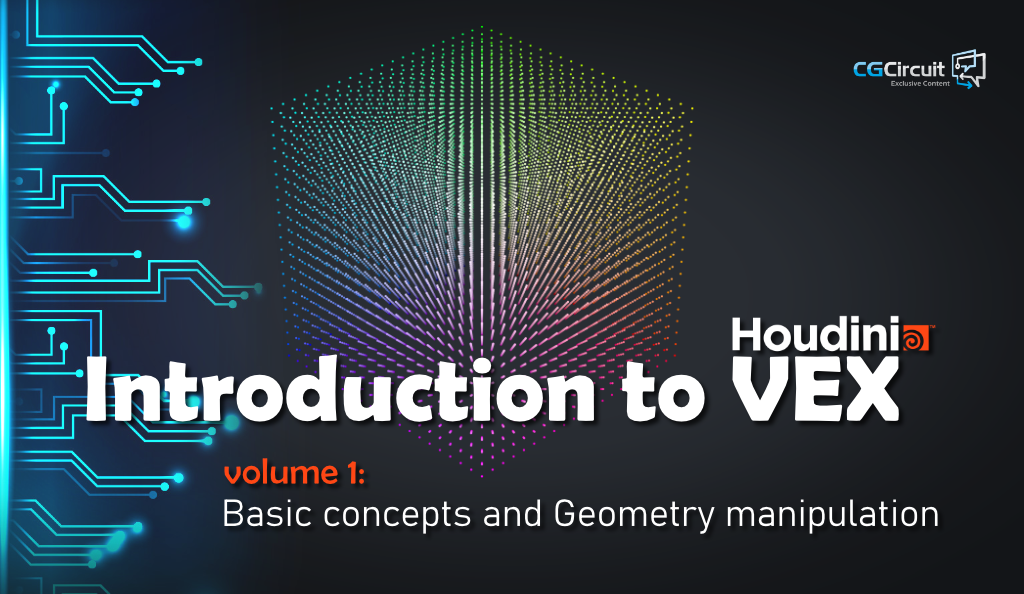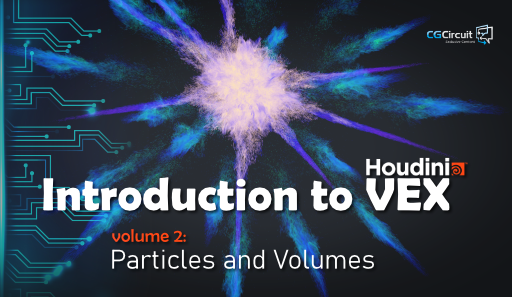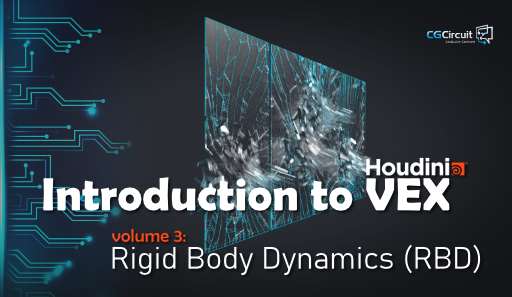SideFX's Houdini is the standard in the creation of production quality Visual Effects for films, television and video games. One of its most powerful features is without a doubt, its native high-performance expression language, VEX.
Although much can be accomplished with it's standard tools, scripting in VEX will open a whole new world of possibilities.
This tutorial series is designed in a way to get you scripting right away even without any previous knowledge of VEX. The videos will take you through all the major tasks involved in creating VFX; modeling, particles, volumes and Rigid Body Dynamic simulations.
Throughout the tutorials, you will create many practical exercises ranging from the creation of a destruction-ready procedural building to the creation of particle explosions, volume clouds and vortices and shattering glass, among others.
If you are seriously considering working in the VFX industry, learning VEX is a must, and the "Introduction to VEX" bundle will get you up and running in no time.
The Author
David Adan is a Visual Effects Technical Director with more than 15 years of experience working in the Television, Games, Films, Architecture and Education industries. Early in his professional career David produced several successful Television campaigns for major clients including TV Azteka, Unilever and La Salle University.
More recently his passion for cinematography and VFX has led him to work initially as a Digital Compositor, and currently as an FX TD in films like the Turkish epic “Fetih 1453”, “Herbst”, “Timebreakers”, “Jumanji: Welcome to the Jungle”, “Asura”, and more recently “Godzilla: King of Monsters”, "American Gods" and "Terminator: Dark fate"..
The Bundle Includes
HScript and Channel Reference
In this tutorial, the viewer will learn many practical applications of HScript and Channel referencing through the construction of a destruction-ready procedural building. Along the way, many powerful modeling nodes will be explained as well as several HScripts variables that will be very useful in your day to day use of Houdini.
This course has been designed for beginner level 3D artists seeking to specialize in VFX, or artists with a background in other 3D applications wanting to get introduced to Houdini for VFX.
After viewing this course, people can expect to have a solid understanding of what HScript is and how to use it to streamline the process of procedural modeling. Additionally, they will be able to start creating customized User Interfaces to control the parameters of the tools they build.
Introduction to VEX vol.1
Main Concepts and Geometry Manipulation
In this tutorial, the viewer will learn the basics of the VEX expression language for Houdini and many of its practical applications in VFX.
General principles of programming like variables, functions, branching and looping will be explained which will be of great use not only for VEX scripting but for any other programming or scripting language that you wish to learn in the future. More specific to Houdini, attributes and many common VEX functions will be explained.
Through many simple and clear exercises, the viewer will learn to use attribute VOPs and Wrangles to modify and create geometry.
Introduction to VEX vol. 2
Particles and Volumes
This course focuses on the use of VEX applied in two of the most common VFX tasks: Particles and Volumes
.Although it is an introduction course, it teaches the implementation of very useful and powerful scripting, through the use of attribute VOPs and Wrangles.
It is designed in such a way that the viewer will learn gradually and in a very practical way, the use of many common VEX functions that can be used in many real situations.
Introduction to VEX vol. 2
Particles and Volumes
In this tutorial, the viewer will learn the basics of the VEX expression language applied to Rigid Body Dynamic Simulations in a hands-on approach.The course will give the viewer the basis to create RBDs that go way beyond the default behavior with relatively little effort through the use of VEX snippets.
In the first chapter, a basic RBD setup will be explained, followed by a thorough explanation of a few very useful VEX functions, that can be used in many situations, finally, the viewer will learn how to activate RBD pieces, add velocity, angular speed and create custom drag forces.
The concepts taught throughout this course can be applied to many real production scenarios.






COMMENTS
Please log in to leave a comment.